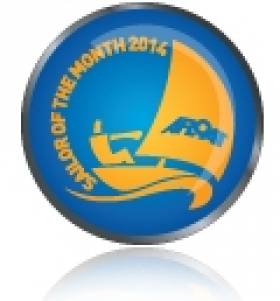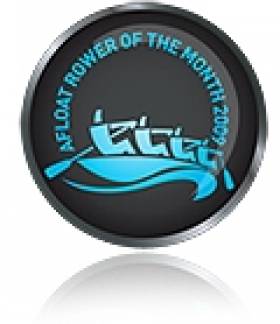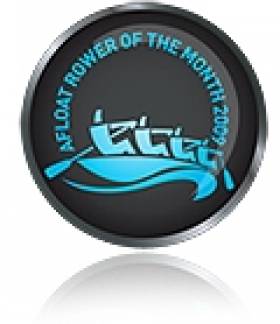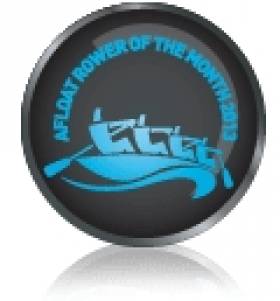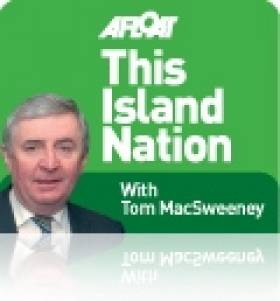Displaying items by tag: Afloat
Sailor of the Year 2014 To Be Announced This Afternoon
#sailoroftheyear – The voting is over, the judges have decided and today the 2014 ISA/Afloat.ie Sailor of the Year will be revealed at a Dublin city centre ceremony.
Over 200 invitees are gathering this afternoon to celebrate some remarkable achievements from the 2014 sailing season.
Afloat's ownership of this award – based on Sailor of the Month winners - has a long history, going back to 1996, and it successfully highlights achievement in every area of sailing.
For example, one month there may be an exceptional voyage honoured, while the next month it might be a major international dinghy championship victory. The diversity is total. And just occasionally, to emphasise that we are a community, which functions afloat and ashore, the monthly award might go to someone who has given selflessly of their time for sailing administration.
A full list of the 2014 achievements is HERE.
The overall national award will be presented to the person who, in the judges' opinion, achieved the most notable results in, or made the most significant contribution to Irish sailing during 2014.
The boating public has had a chance to nominate their top three through an online poll, Afloat.ie got a vote too and the Sailor of the Year judges have decided the final winner.
The winner will be announced this afternoon on Afloat.ie and WM Nixon will review today's awards celebration in his 'Sailing on Saturday' blog tomorrow morning.
2015 Will be 'Pivotal Year' for Irish Sailing Association
#sailing.ie – Irish Sailing Association (ISA) President David Lovegrove gives an update on a fundamental restructure of the organisation
Following the AGM in March 2014, the Board of the ISA received the report of the Strategic Review Group chaired by Brian Craig. In response to its extensive recommendations, the Board initiated a fundamental restructure to re-establish the organisation's relevance to its membership and focus its energies and capabilities on core activities.
Organisational and governance changes have been adopted together with a rationalisation of the professional team, a significant reduction in overheads and the disposal of surplus assets.
These changes allow resources to be re–allocated more directly into providing support at regional and club level and also reflect a change in emphasis from that of largely performing a regulatory role to one of being a source of active guidance at grass roots. This will be achieved within a cost structure which is realistically matched to the existing income profile.
In consultation with the Board and the recently formed Policy Groups, which are a valued source of expert advice on key areas of policy and activities, the Strategic Planning Group under the Chairmanship of Neil Murphy, is developing a new 5 year Strategic Plan 2015-2020. Following consultation with clubs and affiliated organisations in the New Year, this will be presented for consideration and approval at the next AGM in March 2015.
In the meantime, major changes to communications and PR are being implemented with a new website to be launched early in 2015, a collaboration agreement being signed with Afloat Magazine and a newly formatted high profile event, details for which will be announced shortly, that will pay tribute to our sailing achievers at both international and national level.
The training area will see innovative initiatives in 2015 with the launch of an online logbook for the Small Boat Sailing Scheme, the publication of a Junior Organisers' Handbook and the appointment of National Trainers for Sailing, Windsurfing and Power Boating. A Pathway for clubs looking to develop more double –handed sailing at local level for juniors will be finalised in 2015.
The ISA will also focus on developing a structured approach designed to make Coaching resources more readily accessible to sailors of all abilities and interests, including keelboat sailors, and ensure a trickle down benefit from the outstandingly successful High Performance programme.
With a revised and extended structure of Regional/Sailing Development officers, the ISA foresees working much more closely with Clubs, Class Associations and the Irish Cruiser Racing Association to coordinate plans for increased participation levels and sharing of resources. As part of this, it is planned to develop a comprehensive database on racing activities both at Club and at National level. Addressing this lack of information is regarded as key to the development of strategies to enhance and grow racing activity levels.
Cruising represents a large constituency of regular sailors and in consultation with The Irish Cruising Club and other established cruising groups, it is proposed to become more supportive in serving these interests by assisting in organising cruising symposiums, promoting Cruise –in–Company initiatives and providing reliable information on berthing facilities and visitor moorings around the country.
Increasing participation in sailing has long been a strategic objective of the ISA and if club membership and participation levels at many sailing events are an accurate indication of activity, it is clear that a major challenge to be confronted exists in making the sport more accessible and attractive to new participants. We also need to ensure that those who are regularly involved in the sport, but not necessarily as members of clubs, can find cost–effective ways of becoming more formally integrated into our club infrastructure.
During this re–direction of emphasis, it remains a major priority for the ISA to continue delivering its current range of services and competently discharge its responsibilities as the National Governing Body for Sailing.
2015 will be a pivotal year in executing this new direction for the ISA and success will be heavily reliant on the contribution and interaction of all sailors, whatever their interests or needs.
Finally, a big thank you is warranted to the professional team in the ISA and to all the volunteers who have energetically and generously contributed to what has been a very challenging eight months for the ISA.
David Lovegrove,
President
Irish Sailing Annual 2015 – Out Now!
#afloatmag – The 2015 Irish Sailing Annual is published next Monday and packed with details of the forthcoming season plus a review of 2014. Details of the full colour annual below:
News
VOR reporter's prize then BANG!; Dun Laoghaire sailor becomes RORC Commodore; Arklow gets new marina; Volvo award for MGM Boats; 75 years of Sutton dinghies; Farewell to Joe English; Dubarry's Crosshaven born at sea; Greystones fishing 'alive' plus lots more maritime news from around the coast
Irish Sailing Association News
2015 will be pivotal year for sailing's national governing body writes ISA President David Lovegrove
Marine Industry news
BJ Marine makes big moves in busy 2014
2015 Sailing Preview
Three, Two, One... 2015 Here We Come!
2014 Sailing Review
Irish Sailing Review: A Year Of Hope, Regeneration & Success by WM Nixon
Afloat's class of 2014
Reviewing Ireland's sailors of the month for 2014
Howth Yacht Club's Autumn league
Brian Turvey, Commodore of Howth Yacht Club, looks back on a rejuvenated Dublin series
Royal Cork October league
Rob McConnell's Archambault A35 was the IRC1 winner at the CH Marine Autumn League at Royal Cork Yacht Club writes Claire Bateman
Inland Waters
The Barrow blueway -what is it?
Brokerage
The latest boats and equipment in Ireland's marine marketplace
Classifieds
A selection of Afloat.ie's online classified adverts
Dubarry Nautical Crossword
A nautical crossword with a great boating prize of Dubarry deck shoes
Soundings
Maybird and Vogue Benefit Lifeboat
Boston Glory Lands Puspure Afloat Rower of the Month Award
#ROWING: Sanita Puspure is the Afloat Rower of the Month for October. The Old Collegians sculler lifted Irish rowing to a new level when she was invited to be part of the ‘Great Eight’ at the Head of the Charles River in Boston. The crew, made up of some of the top women’s scullers in the world, went on to win the Championship Eight by a margin of almost 20 seconds from the US Rowing crew. Puspure then ended the month by winning the Ireland trial for single scullers, overcoming a tremendous challenge from Lisa Dilleen.
Rower of the Month awards: The judging panel is made up of Liam Gorman, rowing correspondent of The Irish Times and David O'Brien, Editor of Afloat magazine. Monthly awards for achievements during the year will appear on afloat.ie and the overall national award will be presented to the person or crew who, in the judges' opinion, achieved the most notable results in, or made the most significant contribution to rowing during 2014. Keep a monthly eye on progress and watch our 2014 champions list grow.
Afloat Rower of the Month is World Rowing Finalist Sanita Puspure
#ROWING: The Afloat Rower of the Month for August is Sanita Puspure. The Old Collegians oarswoman took fourth place at the World Rowing Championships in Amsterdam in the single sculls, just outside the medals in this elite discipline. She had won her heat, placed second in the quarter-final and third in a semi-final where conditions were very difficult.
The performance topped off an outstanding season for this gritty competitor. She started her run with silver medals on both days of the Memorial Paolo d’Aloja regatta in Italy in April. She took a bronze medal at the European Championships – a breakthrough for an Ireland heavyweight woman – and then made the A Final at the World Cup regatta in Aiguebelette, and won the B Final at Lucerne.
Rower of the Month awards: The judging panel is made up of Liam Gorman, rowing correspondent of The Irish Times and David O'Brien, Editor of Afloat magazine. Monthly awards for achievements during the year will appear on afloat.ie and the overall national award will be presented to the person or crew who, in the judges' opinion, achieved the most notable results in, or made the most significant contribution to rowing during 2014. Keep a monthly eye on progress and watch our 2014 champions list grow.
Afloat Magazine Summer Issue – Out Now!
#Afloatmag – A packed 64–page Summer edition of Afloat hits the newsstand this week, full of all the top Irish boating stories. Here's some of the highlights:
Editorial
If there has been a maritime awakening, can Ireland expect its own Tall Ship sometime
soon?
News
Fastest dinghy in the world, Navy's third order, RCYC ready for Cork week, Ainslie' Auld mug, small craft register blocked, Baltimore is keen, smartphone radio's a lifesaver and Yamaha's new 115 outboard plus much, much more with another 50 maritime news stories
What's in a name?
How do you feel about being called an islander?
Dun Laoghaire's harbour of opportunity
Harbour CEO Gerry Dunne responds to Afloat's article on Ireland's biggest boating centre
ISA new direction
New president David Lovegrove maps out plans for a new course for sailing's national governing body
Voila, a new Jeanneau
The latest in sailing technology from Jeanneau has arrived in Ireland. It's the Sun Odyssey 379
Company profile – Yachtsman
Boating has always been a passion for Yachtsman/Euromarine marine insurance specialists who are celebrating 40 years in business
Ocean goer
A new €230,000 family sailing cruiser arrived
in Greystones. Beneteau's Oceanis 48 has
some new features including a transom trick
ICRA Champs 2014
Dun Laoghaire's waterfront came alive for June's 115–boat regatta. Five new champions were crowned at the Royal Irish Yacht Club and there was wind...in the end
Success on the Solent
Anthony O'Leary's Antix crew from Cork won the British IRC Champs in style
Sailing the north and east coasts
What the east coast lacks in glamour it makes up for in other ways, writes WM Nixon
Racing round –up
Six pages of racing news from a busy dinghy and keelboat scene
Inland
Brian Goggin takes a break on the British canals
Brokerage
The latest boats and equipment in Ireland's marine marketplace
Classifieds
A selection of Afloat.ie's online classified adverts
Dubarry Nautical Crossword
A nautical crossword with a great boating prize
Soundings
With Sally O'Keeffe it's love at first sight. WM Nixon on the sweetest thing in the west.
Afloat Honours O'Donovan for World Cup Performance
# ROWING: Paul O’Donovan is the Afloat Rower of the Month for June. The UCD man had a remarkable start to his career as a senior international, beating former world champion Duncan Grant to win their heat of the lightweight single sculls at the World Cup regatta at Dorney Lake. He qualified for the final by taking second place in the semi-final, and while he found it difficult to find his rhythm in the final, the 19-year-old Skibbereen man had already made his mark. He will represent Ireland at the World Under-23 Championships in Linz in Austria later this month.
Rower of the Month awards: The judging panel is made up of Liam Gorman, rowing correspondent of The Irish Times and David O'Brien, Editor of Afloat magazine. Monthly awards for achievements during the year will appear on afloat.ie and the overall national award will be presented to the person or crew who, in the judges' opinion, achieved the most notable results in, or made the most significant contribution to rowing during 2013. Keep a monthly eye on progress and watch our 2013 champions list grow.
#ROWING: The Afloat Rowers of the Month for April are the Galway Rowing Club under-23 women’s eight which won the Division One title at the Queen’s University Regatta, the first eFlow Grand League Regatta of the season. All eight rowers are juniors, with only talented cox Aifric O’Regan falling outside this age group.
Rower of the Month awards: The judging panel is made up of Liam Gorman, rowing correspondent of The Irish Times and David O'Brien, Editor of Afloat magazine. Monthly awards for achievements during the year will appear on afloat.ie and the overall national award will be presented to the person or crew who, in the judges' opinion, achieved the most notable results in, or made the most significant contribution to rowing during 2013. Keep a monthly eye on progress and watch our 2013 champions list grow.
Pope Benedict Pledges Support for Seafarers
This week in Afloat's ISLAND NATION column by Tom MacSweeney – the Pope supports seafarers... Lightkeepers were an unusual breed of people ... Developing the Shannon Estuary ... An Arctic Convoy Medal ... and other news stories.
Shipping – SEAFARERS HAVE LITTLE TIME IN PORT
"All of us involved in the welfare of seafarers have found that seafarers today have little time in port," the General Secretary of the International Transport Workers' Federation told the Apostleship of the Sea international congress which held in the Vatican in Rome where the Pope was presented with a high-visibility jacket as worn at work by seafarers in port.
David Cockroft said that more ports should establish welfare committees and d provide free wi-fi internet services for seafarers on visiting ships. "Considering that ships' crews have such little time in port these are minimal supports which ports should provide to help them maintain contact with families," he said.
The AoS is represented in 71 countries. Pope Benedict told the conference that seafarers "face situations of injustice," amongst which he included crews abandoned along with the vessels on which they work by owners, the threat of piracy and restrictions imposed by port authorities. He pledged that the Catholic Church would support seafarers in their rights to "dignified and safe working."
LIGHTKEEPERS – EYES ON THE COASTLINE
Lightkeepers were an unusual breed of people. I travelled to the village of Rathbarry in West Cork to meet one of them.
"We lost something with automation. The little microchip cannot look out to sea. Irish Lights was not set up to save life but the eyes which Lightkeepers provided on the coastline were important," former Lightkeeper Gerald Butler told me. "It can be said that anybody providing aids to navigation or assisting the mariner carries certain responsibilities in safety to life at sea but Irish Lights was not set up to save life at sea in the strict sense that phrase implies nor to provide eyes on the coastline for that purpose, other than the operating of the lighthouses and the safety they provided as a warning to vessels. But it seems to me that the de-manning almost passed the public by. Sometimes I do wonder. If a tragedy happens and the lighthouse near it has been de-manned, nobody asks the question or says this never happened while the stations were manned. One could say that some things just become accepted."

Lighthousekeeper Gerald Butler
Gerald comes from the West Cork fishing port of Castletownbere. His grandfather was the Captain of a Lightship and other predecessors were seafarers. His father was a Lightkeeper and his mother's father was a Lightkeeper. What did he miss most when he became redundant in the de-manning of the lighthouses?
"I missed time. When I was made redundant I bought a trawler and spent the next ten years fishing and I had no time of my own. There was no day under 18 hours, some were a full 24 hours. It was a tough life and I found that my creative life had to be put on hold. The comfort of a salary was gone. I am glad I did go into fishing. It opened up a new way of thinking but I lost time for myself, for other things I wanted to do, which was the one major thing I felt I lost.
"The regulations which have come into fishing have destroyed the industry. Ireland has become like a police state where fishermen have to face up to so many regulations. Fishing is a tough business. The regulations from the EU and which have been supported by the Irish Government have murdered fishing. I love the sea and I loved fishing but the regulations have destroyed the industry."
Gerald has written the story of his life. 'THE LIGHTKEEPER' has been published in paperback by The Liffey Press at €16.95. He is now Attendant at the Galley Head Lighthouse in West Cork where his father once served and where he did also. He has set up a website: www.thelightkeeper.ie
Ports – FUTURE OF THE SHANNON ESTUARY
As previously reported by Afloat.ie the public consultation period about the future development of marine-related industry along Ireland's largest estuary, the Shannon, continues until February 15.
Nine sites, described as 'strategic' have been identified for development in counties Clare, Kerry and Limerick in the 'Draft Strategic Integrated Framework Plan for the Shannon Estuary.'
Clare and Kerry County Councils, Limerick City and County Councils, Shannon Development and Shannon Foynes Port Company, were involved in drawing up the plan though they use the land-designation of 'kilometres' to describe 'navigable water' rather than the more correct description, in my view when referring to the marine sphere, of 'nautical miles.' The Shannon Estuary runs from Kerry Head and Loop Head as far as Limerick City and is described as "Ireland's premier deepwater port, catering for ships up to 200,000 deadweight, with ports at Limerick and Foynes. A number of large industries are located there, including the ESB at Moneypoint, Aughinish Alumina, Tarbert Power Station and Shannon Airport. It also has natural resources, wildlife and ecosystems and is a designated Special Area of Conservation (SAC) under the EU Habitats Directive.
Moneypoint; Innismurry/Cahercon (Clare); Limerick Docks; Foynes Island; Foynes Port and adjoining lands; Askeaton Industrial Estate; Aughinish Island, (Limerick): Tarbert Power Station and Ballylongford Landbank (Kerry) are the strategic development locations for 'Marine-Related Industry' with Askeaton zoned for 'Industry' and Limerick Docks zoned for 'Mixed Use'. Moneypoint and Tarbert Power Stations are identified as 'Key Energy Sites' in addition to Ballylongford Landbank, the site of a permitted liquefied natural gas (LNG) Project. Kilconly point, Carrig Island, Tarbert Bay (Kerry) and Moneypoint (Clare) are "opportunity sites for renewable energy developments."
Eight sites are identified for fishing and aquaculture including designated shellfish waters at Poulnasherry Bay and Carrigaholt Bay in County Clare. Other areas include Rinevella Bay, Killimer and Clonderlaw Bay in Clare, Carrig Island in Kerry and Greenish Island and Long Rock in Limerick.
The Plan includes objectives to develop the Cruise Ship industry and highlights "potential in the Islands on the Fergus Estuary"
According to Pat Keating, CEO of Shannon Foynes Port Company which is responsible for all maritime activities and port management on the Estuary, it is a "significant step forward in the positioning of the estuary as a centre of excellence for future marine and port related investment." His company is in the process of finalising a 30-year master plan for the Port of Foynes, Limerick Docks and the Shannon Estuary.
The website www.shannonestuarysifp.ie has details of the plan which is on public display and to which comments should be made by February 15. Public consultation evens are also being staged. It is intended to incorporate the plan into city and county development plans.
Fishing – NORTH-WEST PLAN
The North West Fisheries Local Action Group, supported by Bord Iascaigh Mhara, is seeking tenders to develop an integrated local development strategy for defined areas of the Sligo/Mayo coastal region for the years 2013 to 2015, in line with objectives of the European Fisheries Fund. Applications must be made by 5pm on January 25. Tender details can be downloaded from http://www.bim.ie/news-and-events/content
The development strategy will require collection of social and economic information from coastal communities and identification of infrastructural strengths and weaknesses and development opportunities of the area.
History – ARCTIC MEDAL
After a long struggle to achieve it, the Merchant Navy Association in the UK has succeeded in getting the British Government to announce the introduction of the 'Arctic Convoy Star Medal' for those who served on what were, arguably, the toughest and most difficult convoys in the harshest of conditions during World War Two. The medal is being introduced on the recommendation of a committee set up to examine the proposal, headed by Sir John Holmes.
Colman Shaughnessy of the Radio Officers' Association of which many Irish officers were members, has brought the decision to my attention and suggested that there were Irishmen on Arctic convoys who would qualify for award of the medal. Further information is awaited about the medal awards and whether it will be conferred posthumously.
Environment – CLIMATE CHANGE IS CAUSING ANTARCTIC SEA-ICE TO MOVE
Using data gathered by U.S. military satellite-tracking of the motion of the Antarctic icepack between 1992 and 2010 researchers have found a link between Antarctic winds and the growth of sea-ice in the Weddell and Ross Seas. The analysis, "Wind-driven Trends in Antarctic Sea-ice Drift," was published in the science journal 'Nature Geoscience.'
"Sea-ice is constantly on the move. Around Antarctica the ice is blown away from the Continent by strong northward winds. Since 1992 this ice drift has changed. In some areas the moving of ice away from Antarctica has doubled, while in others it has decreased significantly," said Paul Holland of the British Antarctic Survey. "Until now these changes in ice drift were only speculated upon, using computer models of Antarctic winds. This study of direct satellite observations shows the complexity of climate change. Total Antarctic sea-ice cover is increasing slowly, but individual regions are experiencing much larger gains and losses that are almost offsetting each other overall. These regional changes are caused by changes in the winds, which in turn affect the ice cover through changes in both ice drift and air temperature."
Comments on these stories. We'd love to hear from you. Please contact us or leave a comment in the box below
Email:[email protected]
Afloat on Twitter: @AfloatMagazine
Tom MacSweeney on Twitter: @TomMacSweeney
Ireland Olympian Puspure is Afloat Rower of the Year
# ROWING: Sanita Puspure is the Afloat Rower of the Year for 2012. Puspure made the A Final as a single sculler at World Cup Regattas in Belgrade and Munich and did wonderfully well to qualify as the sole Ireland rowing representative at the Olympic Games. In the Olympic Qualification Regatta at Lucerne she claimed the fourth and final place, pushing Iva Obradovic of Serbia, one of the favourites, into fifth. The three women who finished ahead of Puspure cut a dash at London 2012: Denmark’s Fie Udby Erichsen took silver; Kim Crow of Australia took bronze (in addition to a silver in the double sculls); America’s Genevra Stone won the B Final. Puspure’s position was destined to be in the 11 to 13 ranking and she was unlucky first to suffer illness in the run up to the Games and then to be drawn in a difficult quarter-final which saw her lose out narrowly on a place in the A/B Semi-Finals, the top 12. She won the C Final convincingly to place 13th. After the race she spoke of looking forward to climbing the rankings in this discipline and of targeting Rio 2016. Her steeliness in key races and her very good form in the recent National Assessment suggests that the 30-year-old could be a rower to watch in this Olympiad.
Rower of the Year: The judging panel is made up of Liam Gorman, rowing correspondent of The Irish Times and David O'Brien, Editor of Afloat magazine.


























